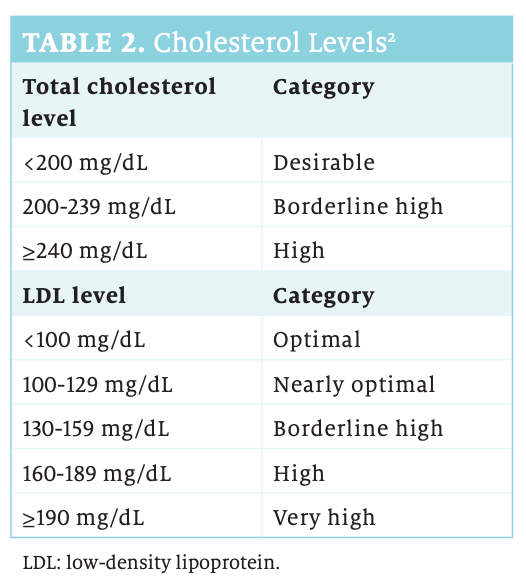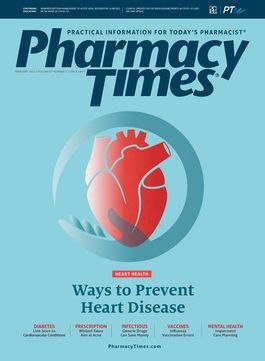Publication
Article
Pharmacy Times
Even Small Changes Can Help Prevent Heart Disease
Author(s):
Leading cause of death in the United States has risk factors that pharmacists can help reduce.
Many conditions affect the heart. The most common “heart disease” is atherosclerotic cardiovascular disease. This is a plaque build-up in the arteries, either in the coronary artery that supplies blood to the heart or in the peripheral arteries that supply blood to the body. As plaque builds in the arteries, blood flow to the heart is reduced.
Heart disease is the leading cause of death for both men and women in the United States, including for most ethnic and racial groups.1 About 655,000 Americans die of heart disease every year, which is 1 in every 4 deaths, according to the Centers for Disease Control and Prevention.
Heart disease costs Americans about $219 billion every year, including cost of health care services, lost productivity due to death, and medications.1
Because of their accessibility, pharmacists can help patients at risk for heart disease make important lifestyle changes.
RISK FACTORS
Some risk factors cannot be modified, such as age and family history. It is important, however, to realize that many can be changed. Key risk factors for heart disease are high cholesterol, hypertension, and smoking. Others include obesity, unhealthy diet, excessive alcohol use, diabetes, and not enough exercise.1
The risk of heart disease increases with each risk factor. Therefore, having more than 1 is especially serious.2
SMOKING
Smoking, which is the leading cause of preventable death and disease in the United States, harms nearly every organ of the body, the heart included. Individuals who smoke are up to 6 times more likely to have a heart attack than those who do not. This risk increases with the number of cigarettes smoked each day. Smokers are also known to have a heart attack or other major heart problem at least 10 years sooner than nonsmokers.2
Currently, 14% of American adults smoke cigarettes: 15.3% of men and 12.7% of women.3
As health care professionals, it is not enough to tell patients to quit smoking. Pharmacists need to give them real solutions to resist the urge to smoke. Some of these solutions include avoiding triggers, calling 1-800-QUITNOW for reinforcement, employing relaxation techniques, engaging in physical activity, going online for support, and trying nicotine replacement products.
Also, pharmacists should advise patients to “keep their eyes on the prize,” meaning to remember the benefits of quitting smoking.4
HYPERTENSION
In 2017, the American College of Cardiology and the American Heart Association published new guidelines for hypertension management and defined hypertension as blood pressure (BP) at or above 130/80 mm Hg (TABLE 15 ).

Hypertension is known as the silent killer because it usually does not cause symptoms. Unfortunately, many individuals do not think about their BP levels until they become seriously ill. Nearly half of all American adults have hypertension, though only 1 in 4 adults with hypertension has it under control with medication.6
Pharmacists should advise patients to keep their BP levels normal by eating a healthy diet that is low in saturated fats and sodium, exercising on a regular basis, getting enough sleep, and limiting alcohol consumption.6 Patients should also be encouraged to measure their BP at home and contact their physicians if the numbers begin to rise. It is also imperative that patients are adherent to their hypertension medication.
HIGH CHOLESTEROL
High blood cholesterol is another major risk factor that patients can address. The higher the cholesterol level, the greater the risk of heart disease.2 About 38% of American adults have high cholesterol (TABLE 22), which is defined as greater than 200 mg/dL.7

Similar to hypertension, high cholesterol has no signs or symptoms, so it is easy not to think about it. That is 1 reason patients should have an annual physical with laboratory work.
To keep cholesterol levels low, patients should follow a healthy diet low in added sugars, saturated fat, and transfat. Remind patients to eat foods naturally high in fiber and unsaturated fats. These foods can help prevent high levels of low-density lipoprotein (LDL) cholesterol and triglycerides and may help increase high-density lipoprotein (HDL) cholesterol, which is considered “good” cholesterol.8
Regular physical activity is another way to reduce LDL cholesterol and triglycerides and at the same time increase HDL cholesterol. The Surgeon General recommends 2 hours and 30 minutes of moderate-intensity exer - cise every week for adults.8
As with patients with hypertension, patients taking medication to control their cholesterol levels must be adherent.
WEIGHT MANAGEMENT
More than 42% of Americans were classified as obese in 2018. The esti - mated medical costs of obesity were $147 billion in 2008. In addition, the medical cost for patients who are obese was almost $1500 more than patients who are not obese.9
Body mass index (BMI) is an easy and inexpensive screening method to determine an individual’s weight category. BMI is calculated by dividing weight in kilograms by the square of height in meters. BMI does not measure body fat directly but is moderately correlated with more direct measures of body fat.
There is no simple or single solution to the obesity epidemic in the United States. There must be a multifaceted approach to weight management. This includes eating a healthy diet, exercising regularly, and overcoming emotional and psychological issues.10
CONCLUSION
Heart disease is deadly, but risk factors can be mitigated with lifestyle changes and medications. Pharmacists can act as health coaches for patients trying to make these lifestyle changes by counseling the and guiding them to products that will make these transitions easier.
Even small changes in lifestyle, such as a 10% weight loss or more physical activity, can significantly reduce the risk of heart disease.
KATHLEEN KENNY, PHARMD, RPH, has more than 25 years of experience as a community pharmacist and is a freelance clinical medical writer based in Colorado Springs, Colorado.
REFERENCES
- Heart disease facts. CDC. Updated September 8, 2020. Accessed January 9, 2021. https://www.cdc.gov/ heartdisease/facts.htm
- Your guide to a healthy heart. US Department of Health and Human Services. November 2005. Accessed January 10, 2021. https://www.nhlbi.nih.gov/ files/docs/public/heart/healthyheart.pdf
- Burden of cigarette use in the U.S. CDC. Updated November 20, 2020. Accessed February 3, 2021. https:// www.cdc.gov/tobacco/campaign/tips/resources/data/ cigarette-smoking-in-united-states.html
- Quit smoking. Mayo Clinic. Updated May 5, 2020. Accessed January 13, 2021. https://www.mayoclinic. org/healthy-lifestyle/quit-smoking/in-depth/nicotine-craving/art-20045454
- Whelton PK, Carey RM, Aronow WS, Casey DE, et al. 2017 ACC/AHA/AAPA/ABC/ACPM/AGS/APhA/ASH/ ASPC/NMA/PCNA guideline for the prevention, detection, evaluation, and management of high blood pressure in adults. Hypertension. 2018;71(19):e13-e115. doi:10.1161/HYP.0000000000000065
- Preventing high blood pressure. CDC. Updated February 24, 2020. Accessed January 13, 2021. https:// www.cdc.gov/bloodpressure/prevent.htm
- Cholesterol. CDC. Updated September 8, 2020. https:// www.cdc.gov/cholesterol/. Accessed January 13, 2021.
- Preventing High Cholesterol. CDC. Updated January 31, 2020. https://www.cdc.gov/cholesterol/prevention. htm. Accessed January 14, 2021.
- Overweight and obesity: adult obesity facts. CDC. Updated June 29, 2020. Accessed January 14, 2021. https://www.cdc.gov/obesity/data/adult.html
- Strategies to Prevent Obesity. CDC. Updated October 29, 2020. https://www.cdc.gov/obesity/strategies/ index.html. Accessed January 14, 2021.







